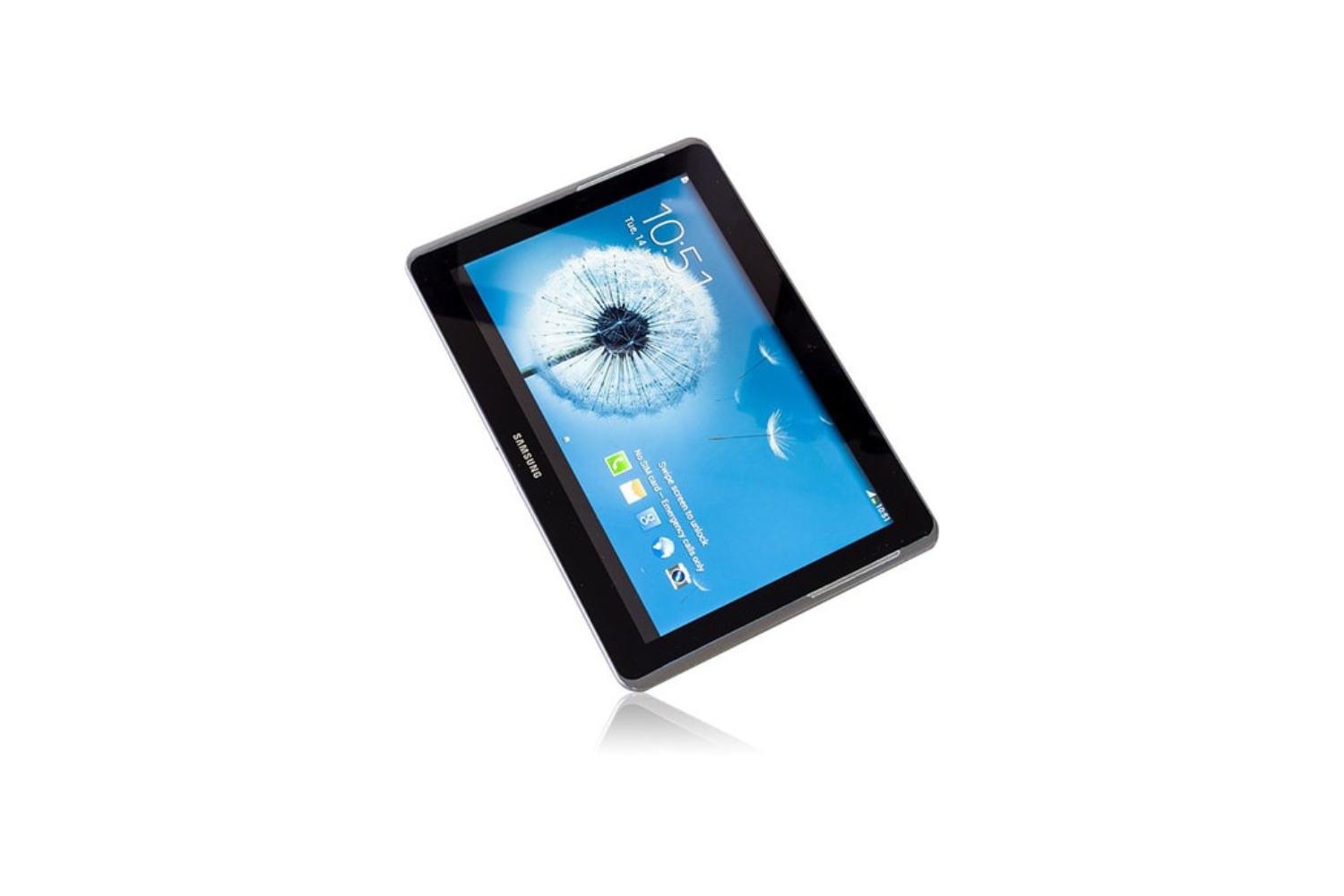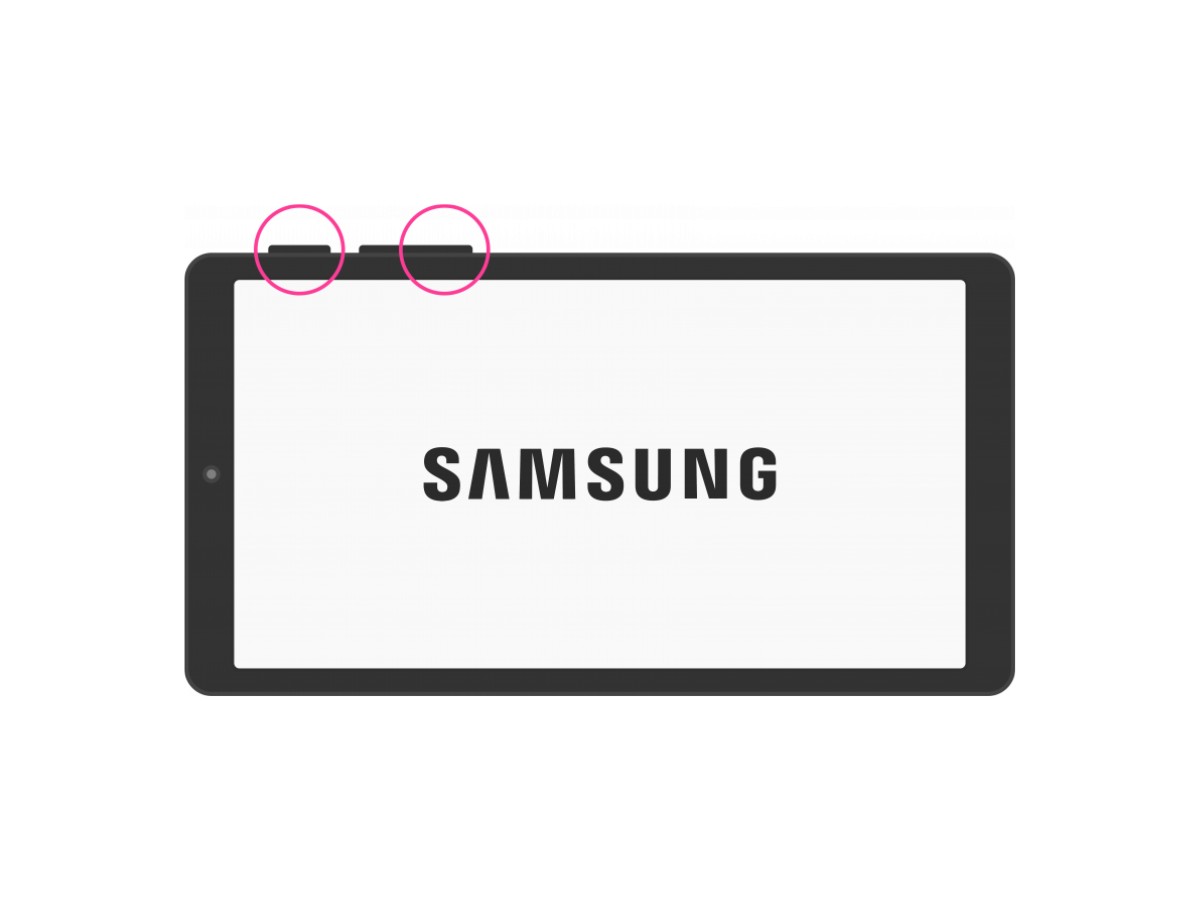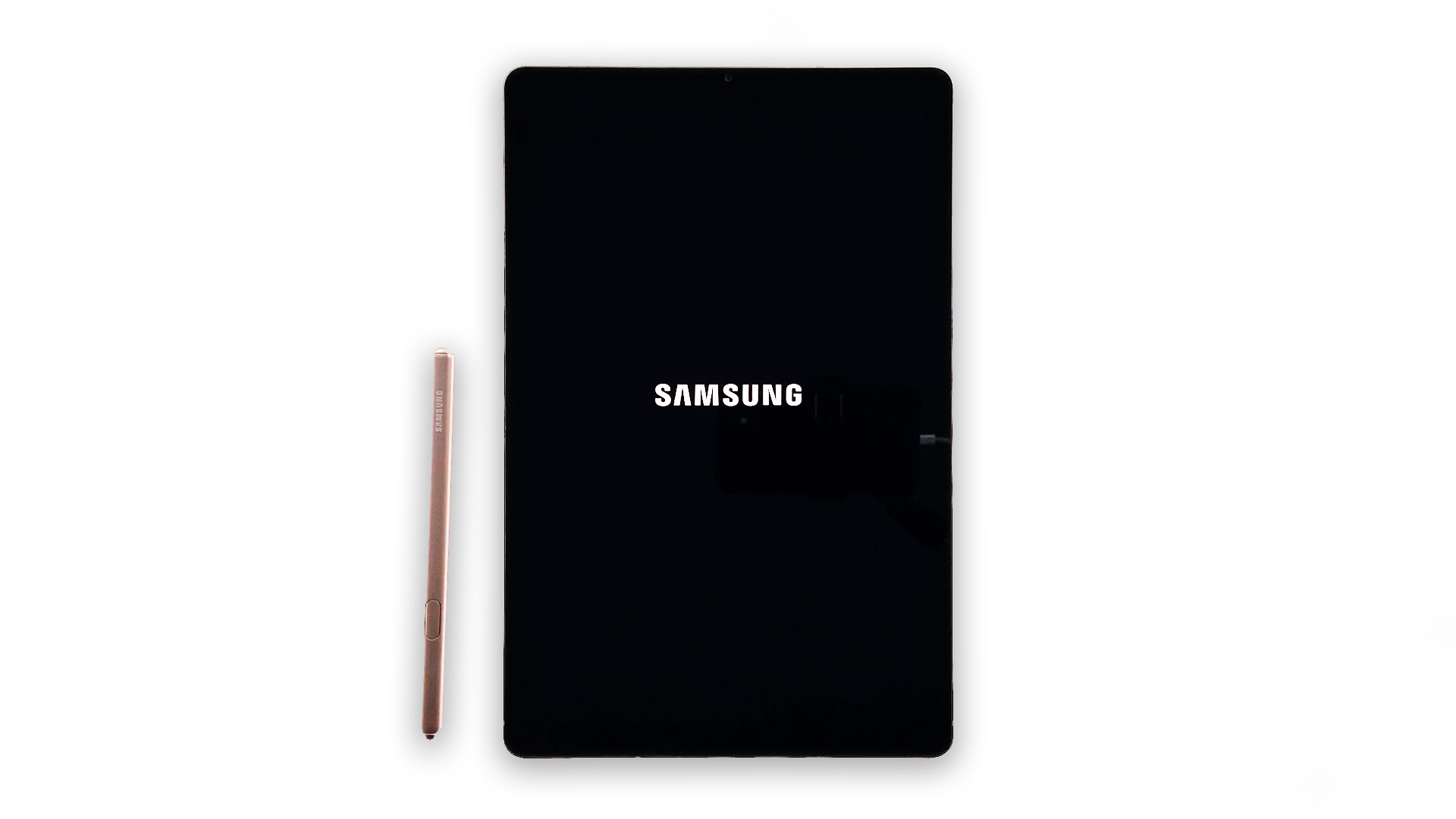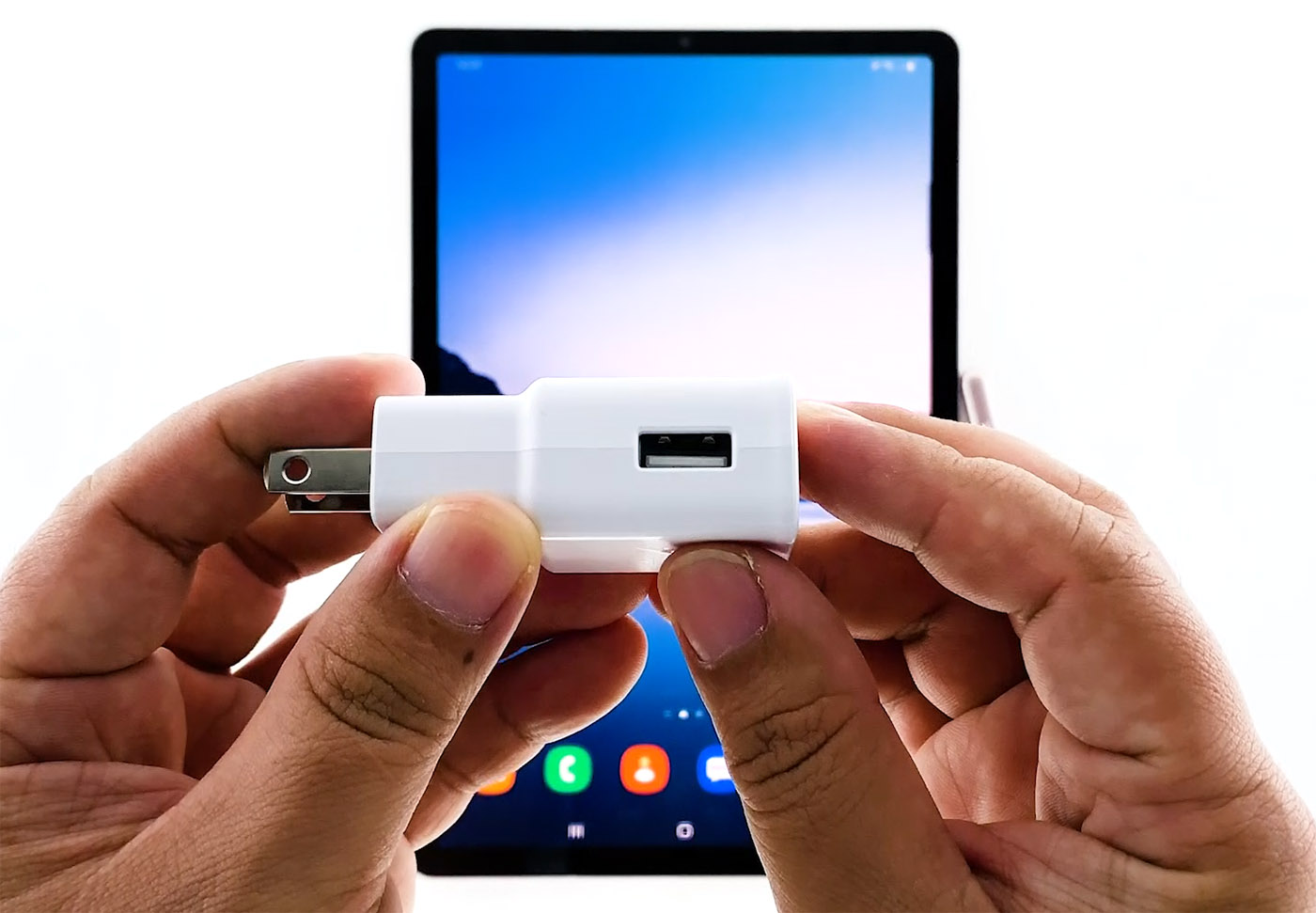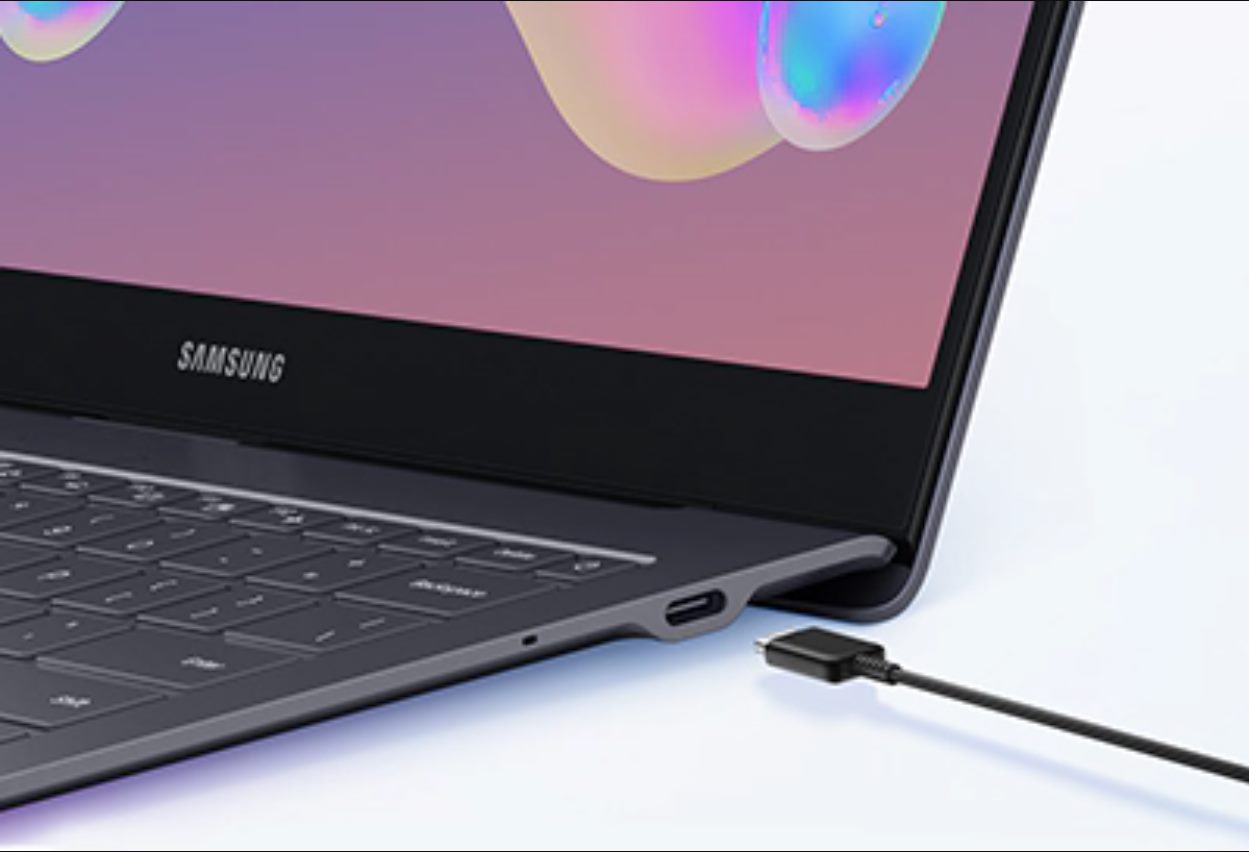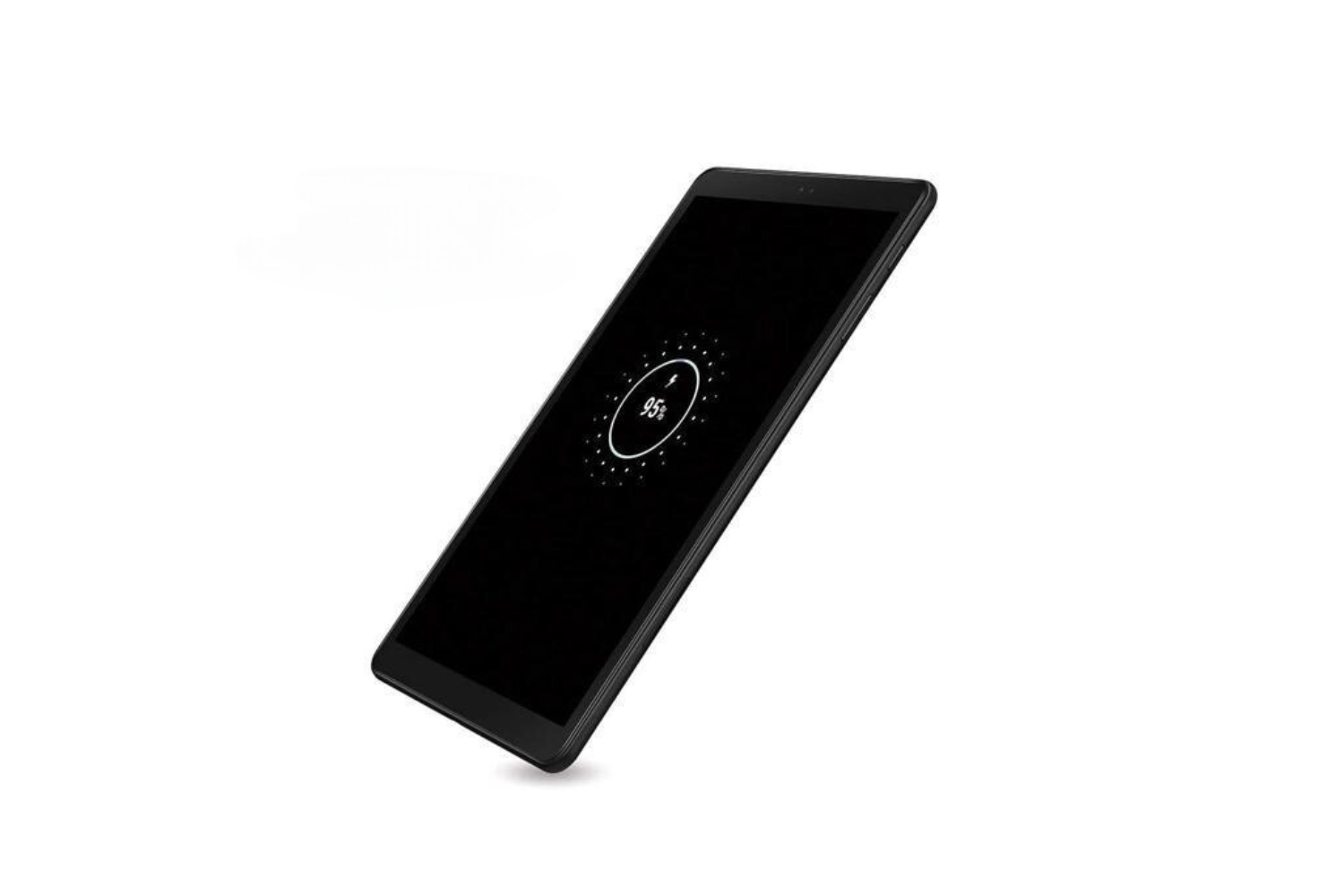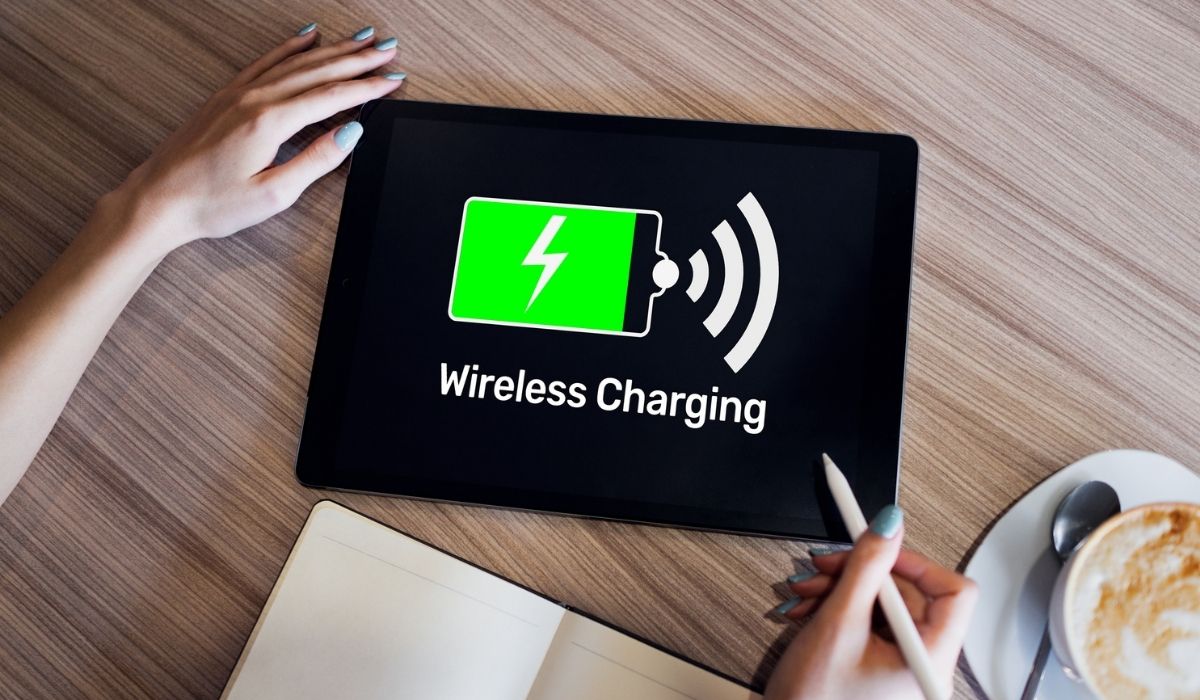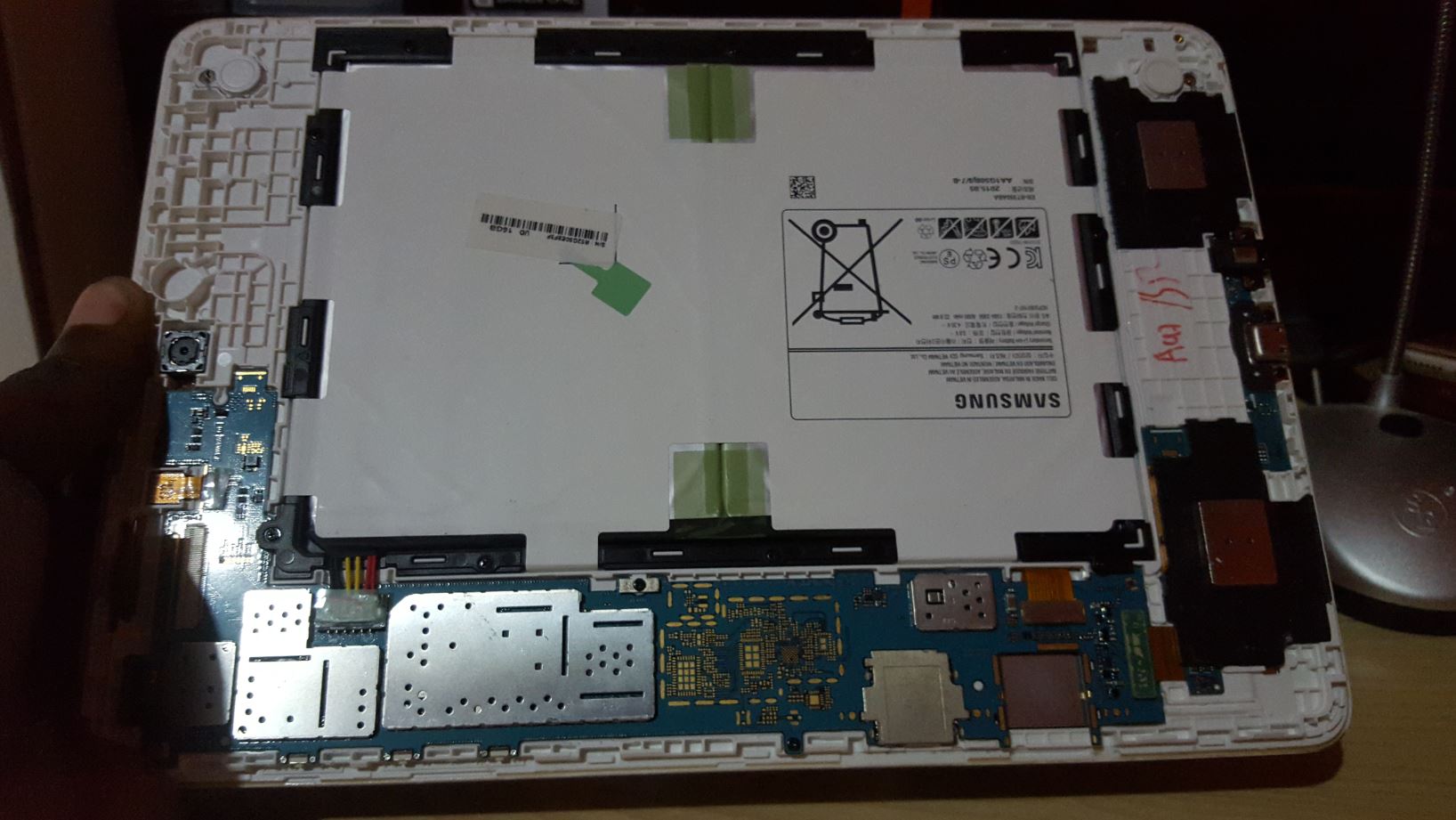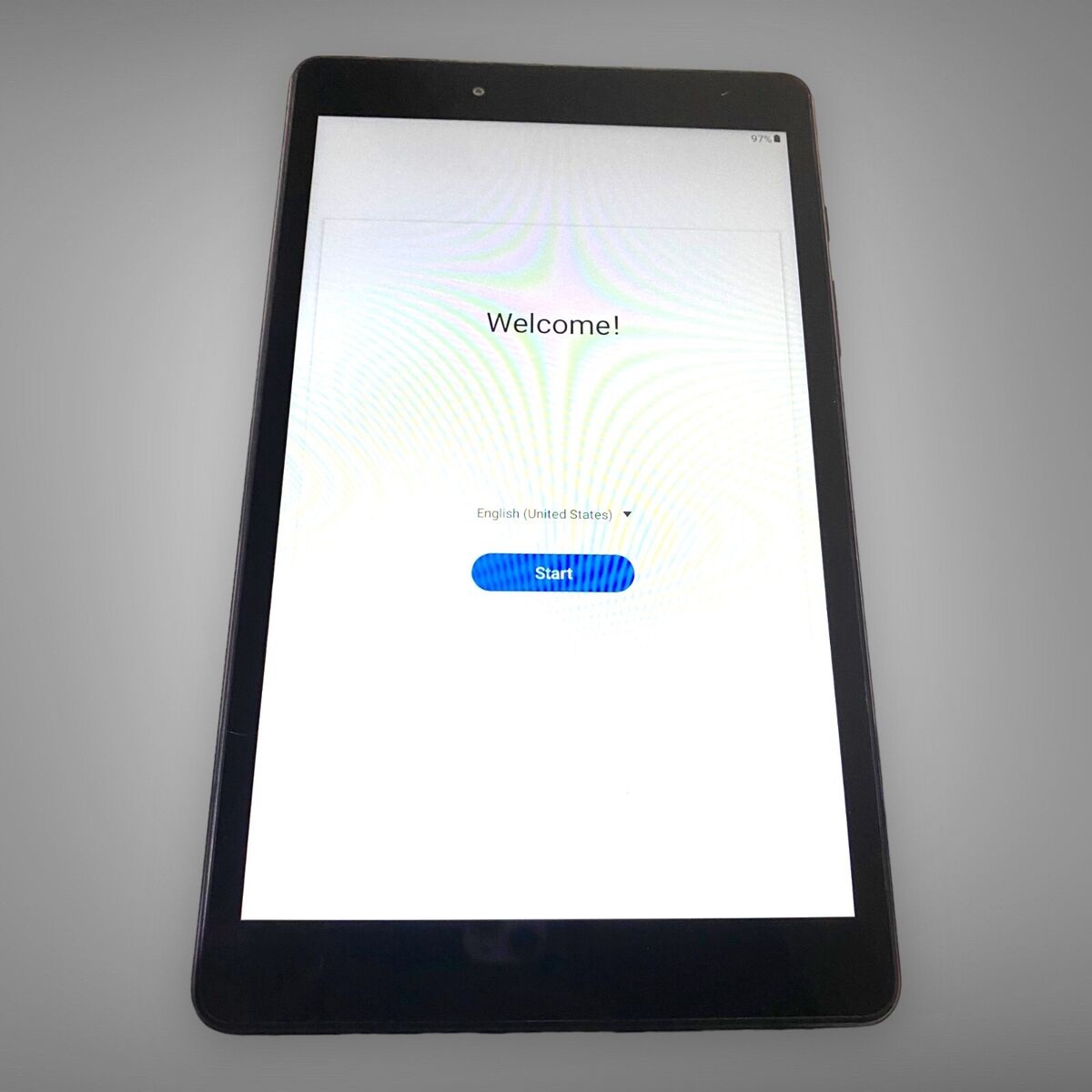Common Reasons for Samsung Tablet Not Charging
A Samsung tablet not charging can be a frustrating issue to deal with, especially when you rely on your device for work, entertainment, or staying connected with loved ones. There are several common reasons why your Samsung tablet may not be charging properly. Understanding these reasons can help you troubleshoot and resolve the issue quickly.
1. Faulty Charging Cable: One of the most common reasons for a tablet not charging is a faulty charging cable. Over time, cables can become worn out, resulting in a poor connection between the tablet and the power source.
2. Loose or Damaged Charging Port: Another possible culprit is a loose or damaged charging port on your Samsung tablet. If the charging port is loose, the cable may not fit securely, preventing a proper charge. Physical damage to the port can also interfere with charging.
3. Insufficient Power Source: Using an unreliable or low-power power source can cause charging issues. Ensure that you are using a compatible charger and that the power source provides enough electricity to charge your tablet.
4. Software Glitches: Occasionally, software glitches can interfere with the charging process. This can happen after a software update, when a rogue app is running in the background, or due to other software-related issues.
5. Overheating Issues: Tablets generate heat during use, and excessive heat can prevent the device from charging properly. Overheating may occur due to heavy usage, exposure to high temperatures, or a malfunctioning component.
6. Battery Problems: If your tablet’s battery is old, worn out, or damaged, it may not hold a charge effectively. This can result in slow charging or the inability to charge at all.
7. Third-party App Interference: In rare cases, certain third-party apps can interfere with the charging process on Samsung tablets. Uninstalling or disabling suspicious apps can help resolve the issue.
8. Faulty Charger: The charger itself may be the problem. If all other troubleshooting steps fail, try using a different charger to see if the issue persists.
Identifying the underlying cause of your Samsung tablet not charging is the first step in resolving the issue. The next section will provide troubleshooting steps to help you fix the problem and get your tablet up and running again.
Faulty Charging Cable
A faulty charging cable is one of the most common culprits when it comes to a Samsung tablet not charging properly. Over time, charging cables can become worn out, leading to a poor or inconsistent connection between the tablet and the power source.
When dealing with a faulty charging cable, there are a few things you can check for:
1. Visible Damage: Inspect the charging cable for any signs of physical damage, such as frayed wires, bent connectors, or exposed insulation. If you spot any visible damage, it’s likely time to replace the cable.
2. Try a Different Cable: If you have access to another charging cable, try using it to connect your tablet to the power source. This will help you determine whether the issue is with the cable itself or another component of the charging setup.
3. Clean the Charging Connector: Over time, dust, dirt, and debris can accumulate in the charging connector of the tablet or on the cable’s connector. Use a soft, dry cloth or compressed air to gently clean these connectors, ensuring a better connection.
4. Check for a Loose Connection: Make sure the charging cable is securely connected to both the tablet and the power source. Sometimes, a loose connection can prevent the tablet from charging, even if the cable appears to be intact.
If you determine that the charging cable is indeed faulty, it’s important to replace it with a high-quality, compatible cable. Avoid using cheap or counterfeit cables, as they may not provide a stable charge and can potentially damage your tablet.
Remember, even if your charging cable is in good condition, it’s always a good idea to have a spare cable on hand for emergencies or to use as a backup when traveling.
By addressing the issue of a faulty charging cable, you can effectively resolve one of the common reasons for a Samsung tablet not charging. However, if the problem persists after trying a new cable, it’s important to explore other potential causes to get your tablet back in working order.
Loose or Damaged Charging Port
Another common reason why a Samsung tablet may not be charging is due to a loose or damaged charging port. The charging port is the connector where you plug in the charging cable to the tablet.
If the charging port is loose, it can create a poor connection with the charging cable, resulting in difficulty or inability to charge the tablet. Physical damage to the charging port, such as bent pins or debris lodged in the port, can also prevent proper charging.
To address a loose or damaged charging port, consider the following steps:
1. Check for Physical Damage: Inspect the charging port of your tablet for any visible signs of damage. Look for bent or misaligned pins, dirt, lint, or any other debris that may be blocking the connection. If you spot any issues, it may be necessary to have the port repaired or replaced by a professional.
2. Clean the Charging Port: Use a soft, dry cloth or compressed air to gently clean the charging port. Be careful not to insert any objects or use excessive force, as this can cause further damage. Cleaning the port can remove any debris that may be hindering the charging process.
3. Ensure a Secure Connection: When connecting the charging cable to the tablet, make sure it is inserted fully and securely into the charging port. Sometimes, a loose connection can be mistaken as a faulty charging port. Wiggle the cable gently to ensure it is seated properly.
4. Test with a Different Cable: Try using a different charging cable to verify if the issue lies with the port or the cable itself. If the tablet charges fine with a different cable, it indicates that the original cable may be the problem, and a replacement is necessary.
If you have tried the above steps and the tablet still does not charge or the charging port appears to be physically damaged beyond repair, it is recommended to reach out to a professional technician or the manufacturer for further assistance.
Addressing a loose or damaged charging port is essential for resolving charging issues with your Samsung tablet. By ensuring a secure and stable connection, you can restore the device’s charging functionality and continue using it smoothly.
Insufficient Power Source
An insufficient power source can also be a common reason why your Samsung tablet is not charging properly. Using an unreliable or low-power power source can result in slow charging or the tablet not charging at all.
Here are some factors to consider when dealing with an insufficient power source:
1. Incompatible Charger: Ensure that you are using a charger that is specifically designed for your Samsung tablet model. Using an incompatible charger can lead to insufficient power output, causing charging issues.
2. Low-Power Outlet: If you are using a wall outlet to charge your tablet, make sure it provides enough electricity to charge the device. Some outlets may have low power output or may be damaged, resulting in insufficient charging.
3. USB Port Limitations: If you are charging your tablet through a USB port on a computer or other devices, be aware that some USB ports may not provide sufficient power. USB ports on older computers or low-power devices may not be capable of charging your tablet adequately.
4. Power Strip or Extension Cord: If you are using a power strip or extension cord to connect your charger to the wall outlet, it’s important to ensure that the power strip or cord is functioning correctly. Faulty or damaged power strips/cords can impact the power flow, leading to insufficient charging.
To address insufficient power source issues, consider the following steps:
1. Use a Reliable Charger: Make sure you are using a charger that is recommended and provided by the manufacturer. If you suspect that your charger is not working properly, try using a different charger to see if it resolves the charging problem.
2. Plug Directly into an Outlet: If you are currently using a power strip or extension cord, plug your charger directly into a wall outlet to bypass any potential power flow issues caused by these devices. This can help ensure a more stable and reliable charging source.
3. Consider Charging via USB: If you are charging through a USB port, try connecting your tablet to a different port or a more powerful USB port, such as those found on newer laptops or desktop computers. This can provide a stronger power output for charging.
It is important to note that charging times may vary depending on the power source and capacity of the tablet’s battery. If you are using your tablet extensively while charging, it may take longer for the battery to charge fully.
By ensuring you have a reliable and compatible power source, you can address the issue of an insufficient power source and ensure your Samsung tablet charges properly.
Software Glitches
Software glitches can occasionally interfere with the charging process on Samsung tablets. These glitches can be caused by several factors, including software updates, conflicts with certain apps, or other software-related issues.
When dealing with software glitches, here are some troubleshooting steps you can take:
1. Restart the Tablet: A simple restart can often resolve minor software glitches. Press and hold the power button on your Samsung tablet until the power options appear, then select “Restart” to reboot the device. After the restart, check if the tablet charges properly.
2. Boot in Safe Mode: Booting your tablet in safe mode can help you identify if a specific app is causing the glitch. To boot in safe mode, press and hold the power button until the power options appear. Then, press and hold the “Restart” option until the prompt to enter safe mode appears. In safe mode, only the pre-installed system apps will be active. If the tablet charges fine in safe mode, it suggests that a third-party app is causing the charging issue.
3. Check for System Updates: Make sure that your Samsung tablet is running the latest software version. Software updates often include bug fixes and improvements that can resolve charging-related issues. To check for updates, go to Settings > Software Update and select “Download and Install” if an update is available.
4. Reset the Tablet’s Settings: Resetting the tablet’s settings can help resolve any software-related conflicts causing the charging issue. However, please note that this will reset all your customized settings, so it’s recommended to back up your data before proceeding. To reset settings, go to Settings > General Management > Reset > Reset Settings and confirm the reset.
If none of the above steps resolve the software glitch, you may need to consider performing a factory reset. A factory reset will erase all data on your tablet, so it should be done as a last resort and after backing up your important files and data.
In some cases, persistent software glitches that affect the charging process may require further assistance from Samsung support or a technician familiar with the device’s software. They can provide more advanced troubleshooting steps or perform repairs if necessary.
By following these troubleshooting steps, you can address software glitches that may be preventing your Samsung tablet from charging properly and get it back up and running smoothly.
Overheating Issues
Overheating can be another factor that causes charging issues in Samsung tablets. Tablets generate heat during normal operation, and excessively high temperatures can interfere with the charging process. Various factors can contribute to overheating, including heavy usage, exposure to high temperatures, or a malfunctioning component.
If you suspect that overheating is the cause of your tablet not charging properly, consider the following steps:
1. Allow the Tablet to Cool Down: If your tablet feels hot to the touch, give it some time to cool down before attempting to charge it. Turn off the tablet and remove it from a case or any other covering that might trap heat. Placing the tablet in a cool environment can help dissipate heat faster.
2. Avoid Using the Tablet While Charging: Using your tablet while it is charging can generate additional heat and slow down the charging process. To prevent overheating, refrain from using resource-intensive apps or games while the tablet is plugged in.
3. Check for Background Processes: Close any unnecessary apps or processes that may be running in the background. These apps can consume system resources and generate heat, affecting the charging process. You can access the app switcher or the task manager to manually close apps.
4. Remove the Tablet’s Case: Some tablet cases can trap heat and hinder the dissipation of heat, contributing to overheating. Remove the case while the tablet is charging to allow better air circulation and reduce the risk of overheating.
5. Seek Adequate Ventilation: When charging your tablet, ensure that it has adequate ventilation. Avoid placing it on soft surfaces like pillows or blankets, as they can block the device’s vents and cause heat buildup. Instead, place the tablet on a hard, flat surface that allows air to circulate.
If your tablet consistently experiences overheating issues even under normal usage conditions, it might be indicative of a hardware problem. In such cases, it is recommended to reach out to Samsung support or visit an authorized service center for further assistance.
By addressing overheating issues, you can help alleviate the charging problems in your Samsung tablet. Remember to use your tablet responsibly and provide it with the necessary conditions to maintain optimal performance and charging capabilities.
Battery Problems
When your Samsung tablet is experiencing charging issues, it’s important to consider the condition of the battery. Over time, batteries can degrade and develop problems that can impact their charging performance.
Here are some common battery problems that can result in charging issues:
1. Battery Degradation: Over time, a tablet’s battery can degrade, leading to reduced capacity and slower charging times. This can result in the tablet not charging as efficiently or not holding a charge for long periods.
2. Battery Age: The age of the battery can also affect its charging performance. If you have been using your tablet for a long time, the battery may be nearing the end of its lifespan, which can result in charging problems.
3. Battery Swelling: One sign of a faulty battery is swelling. If your tablet’s battery appears bloated or bulging, it signifies a defective battery. Swollen batteries can cause charging issues and should be replaced immediately.
4. Internal Battery Faults: Internal faults within the battery, such as a faulty charging circuit or damaged cells, can also lead to charging problems. These issues require professional repair or battery replacement.
If you suspect battery problems as the cause of your tablet’s charging issues, consider the following steps:
1. Calibrate the Battery: Occasionally, recalibrating the battery can help resolve charging problems. To calibrate the battery, fully charge the tablet and then use it until the battery drains completely. Charge it back to full capacity without interruptions. This process can recalibrate the battery’s charging cycle.
2. Battery Replacement: If your tablet’s battery is old, degraded, swollen, or exhibiting other signs of malfunction, it may be necessary to replace it. Contact Samsung support or consult a professional technician who can provide guidance and perform the battery replacement.
3. Charging Habits: Additionally, consider reviewing your charging habits to ensure that you are not overcharging or undercharging the tablet’s battery. Avoid frequent deep discharges, as this can accelerate battery degradation.
Remember to use genuine and approved replacement batteries to ensure compatibility and avoid further complications.
In situations where the tablet’s charging issues are due to internal battery faults or complex battery-related problems, it is recommended to seek assistance from a professional technician or contact Samsung support for further troubleshooting and solutions.
By addressing battery problems, you can improve the charging performance of your Samsung tablet and ensure long-lasting, reliable use.
Third-party App Interference
In some cases, third-party apps installed on your Samsung tablet can interfere with the charging process, causing issues and preventing the tablet from charging correctly. Certain apps might consume excessive resources or have compatibility conflicts, leading to charging problems.
Here’s how you can address third-party app interference:
1. Identify Suspicious Apps: Take note of any recently installed apps or apps that tend to run in the background. These could be potential culprits causing charging problems. Look for apps that are known to consume a lot of resources or have reported compatibility issues with your tablet model.
2. Uninstall Apps for Troubleshooting: Start by uninstalling recently installed or suspicious apps one by one to identify if any single app is creating interference. After uninstalling an app, restart your tablet and check if the charging problem persists. If the charging problem is resolved after uninstalling a particular app, it indicates that app was causing the interference.
3. Disable Background Processes: Some apps have background processes that continue to run even when you’re not actively using them. These processes can consume system resources and disrupt the charging process. To investigate, go to Settings > Battery > Battery Usage and check for any apps with high battery usage. If you notice suspicious apps consuming a substantial amount of battery, consider disabling or restricting their background activity.
4. Reinstall Apps Judiciously: If you rely on specific apps that could be causing the interference, try reinstalling them from a trusted source, ensuring that you have the latest version compatible with your tablet. This can help resolve any bugs or compatibility issues that may have caused the charging problem.
Occasionally, problematic apps might prompt you to grant unnecessary permissions or display suspicious behavior that could affect your tablet’s performance and charging. It’s important to exercise caution when granting permissions and only download apps from reputable sources.
If you have tried the above steps and are still experiencing charging issues due to third-party app interference, consider reaching out to the app developer for support or contacting Samsung’s customer support for further assistance. They may be able to provide additional troubleshooting steps or updates specific to your tablet model.
By addressing third-party app interference, you can optimize your tablet’s charging process and ensure smooth and reliable charging performance.
Faulty Charger
A faulty charger can also be a common reason why a Samsung tablet is not charging properly. Over time, chargers can wear out or become damaged, resulting in an unreliable power supply and charging issues.
Here’s what you can do to address a faulty charger:
1. Inspect the Charger: Carefully examine the charger for any visible signs of damage, such as frayed wires, bent connectors, or loose parts. If you notice any issues, it’s likely that the charger is faulty and needs to be replaced.
2. Try a Different Charging Adapter: If you have access to another charger that is compatible with your tablet, try using it to charge your device. This will help determine if the original charger is the problem or if there is another issue with the tablet itself.
3. Test with a Different Cable: If you suspect that the charger cable may be the culprit, try using a different cable with the same charger adapter. Sometimes, charging cables can degrade over time and cause unreliable charging.
4. Check for Loose Connections: Ensure that the charger and the cable are securely connected to both the power source and the tablet. Loose connections can lead to intermittent charging or a complete failure to charge.
5. Replace the Charger: If all troubleshooting steps indicate that the charger is indeed faulty, it’s necessary to replace it with a new charger from a trustworthy source. Be sure to choose a charger that is specifically designed for your Samsung tablet model to ensure proper compatibility and charging performance.
It’s crucial to use genuine chargers or chargers from reputable third-party manufacturers. Using counterfeit or cheap chargers can potentially damage your tablet and pose safety risks.
If you have attempted all the above steps and continue to experience charging issues, it’s important to reach out to Samsung support or a recognized repair center for further assistance. They can help diagnose any underlying problems and provide appropriate solutions.
By addressing any problems with the charger, you can ensure a reliable and safe charging experience for your Samsung tablet.
Troubleshooting Steps to Fix Samsung Tablet Not Charging Issues
If you’re facing charging issues with your Samsung tablet, there are several troubleshooting steps you can take to resolve the problem. Here’s a step-by-step guide to help you fix the charging issue:
1. Check the Charging Cable: Inspect the charging cable for any visible damage, such as frayed wires or bent connectors. Try using a different cable to see if the issue lies with the cable itself.
2. Clean the Charging Port: Gently clean the charging port of your tablet using a soft, dry cloth or compressed air. Removing any debris or dust from the port can improve the connection and ensure proper charging.
3. Try a Different Power Source: Connect your tablet to a different power source, such as a wall outlet or another USB port. This will help determine if the problem is with the power source you were using initially.
4. Restart the Tablet: Restarting your tablet can often fix minor software glitches that may be affecting the charging process. Press and hold the power button, then select “Restart” from the power options.
5. Boot in Safe Mode: Booting your tablet in safe mode can help identify if a third-party app is interfering with the charging process. To enter safe mode, press and hold the power button, then press and hold the “Restart” option until the prompt to enter safe mode appears.
6. Check for System Updates: Ensure that your tablet is running the latest software version. Check for system updates by going to Settings > Software Update and selecting “Download and Install” if an update is available.
7. Reset the Tablet’s Settings: Resetting your tablet’s settings can help resolve software-related conflicts. Before resetting, make sure to back up your important data. Go to Settings > General Management > Reset > Reset Settings, then confirm the reset.
8. Remove and Reinsert the Battery (if applicable): If your Samsung tablet has a removable battery, power off the device, remove the battery, wait for a few seconds, then reinsert it. Power on the device and check if the charging issue is resolved.
9. Contact Samsung Support: If you have tried all the above steps and the tablet still does not charge properly, it may be necessary to seek assistance from Samsung support or visit an authorized service center. They can provide further guidance and potential repairs if needed.
It’s important to note that these troubleshooting steps are general recommendations and may not address all charging issues. If you are unsure or require additional assistance, it’s always best to consult with a professional or contact the manufacturer’s support.
By following these troubleshooting steps, you increase the chances of resolving the charging issue with your Samsung tablet and getting it back to normal functioning.
Check the Charging Cable
The charging cable is a critical component when it comes to charging your Samsung tablet. It is important to verify the condition of the charging cable as it is one of the most common causes of charging issues. Over time, cables can become worn out, resulting in a poor or inconsistent connection between the tablet and the power source.
Here are some steps to effectively check the charging cable:
1. Inspect for Visible Damage: Start by carefully examining the charging cable for any visible signs of damage. Look for frayed or exposed wires, bent connectors, or any other signs of wear and tear. If you notice any damage, it’s likely time to replace the cable.
2. Try a Different Cable: If you have access to another charging cable, try using it to connect your tablet to the power source. This will help you determine whether the issue is with the cable itself or another component of the charging setup. If the tablet charges properly with the new cable, it indicates that the original cable is faulty.
3. Clean the Connectors: Over time, dust, dirt, and debris can accumulate in the charging cable’s connectors, leading to a poor connection. Use a soft, dry cloth or compressed air to gently clean the connectors, ensuring a better connection. Ensure that the cable is unplugged from both the tablet and the power source before cleaning.
4. Check for a Secure Connection: Make sure that the charging cable is securely plugged into both the tablet and the power source. Sometimes, a loose connection can prevent the tablet from charging, even if the cable appears to be intact. Gently wiggle the cable to ensure it is properly seated in the charging ports.
If you determine that the charging cable is indeed faulty or damaged, it is important to replace it with a high-quality, compatible cable. Avoid using cheap, counterfeit cables as they may not provide a stable charge and can potentially damage your tablet.
Having a spare charging cable is also recommended, especially when traveling or in case of emergencies. This ensures that you have a backup option in case of any unforeseen issues with the primary charging cable.
By checking the condition of the charging cable and ensuring a secure and proper connection, you can successfully address one of the common reasons for a Samsung tablet not charging. However, if the tablet still does not charge after using a new cable, it’s important to explore other potential causes to get to the root of the issue.
Clean the Charging Port
The charging port on your Samsung tablet is another crucial component that can affect the charging process. Over time, debris, dirt, and lint can accumulate in the charging port, obstructing the connection between the charger and the tablet. Cleaning the charging port can help improve the connection and ensure proper charging.
Here are the steps to effectively clean the charging port:
1. Power Off the Tablet: Before cleaning the charging port, ensure that your tablet is powered off. This prevents any accidental damage to the device or the charging process.
2. Inspect the Charging Port: Use a flashlight or a magnifying glass to examine the charging port for any visible debris or obstruction. Look for dust, lint, or any other foreign particles that might affect the connection.
3. Use Compressed Air: If you spot any debris in the charging port, use compressed air to blow out the dust and particles gently. Hold the can of compressed air upright and use short, controlled bursts. Be careful not to blow air too forcefully, as it may push the debris further into the port.
4. Use a Soft Brush or Toothpick: For stubborn debris that cannot be removed with compressed air, you can use a soft brush or a toothpick to carefully dislodge it. However, exercise caution to avoid damaging the connectors or causing any scratches. Gently brush or scrape away the debris from the port.
5. Avoid Using Liquids: It is important to note that liquids should not be used to clean the charging port as they can damage the internal components. Stick to using only dry methods such as compressed air, brushes, or toothpicks.
6. Recheck for Debris: After cleaning, inspect the charging port again to ensure that all debris has been effectively removed. Ensure that the port appears clean and clear of any obstructions before attempting to charge the tablet.
By regularly cleaning the charging port, you can prevent debris buildup and potential connection issues. It is recommended to incorporate this maintenance step into your device care routine, especially if you frequently use your tablet in dusty or dirty environments.
If your tablet continues to have charging issues even after cleaning the charging port, it may be necessary to explore other potential causes and perform additional troubleshooting steps.
Try a Different Power Source
If your Samsung tablet is not charging, it’s important to consider the power source you are using. Sometimes, an unreliable or low-power power source can be the cause of charging issues. By trying a different power source, you can determine if the problem lies with the original power source or if it is an issue with the tablet itself.
Here are the steps to effectively try a different power source:
1. Use a Different Wall Outlet: If you are currently using a wall outlet to charge your tablet, try plugging it into a different outlet. Sometimes, certain outlets may have low power output or may be damaged, resulting in insufficient charging. By connecting your tablet to a different wall outlet, you can rule out any issues with the original outlet.
2. Test with Another Charging Cable: In addition to trying a different power source, consider using a different charging cable as well. Connect your tablet to the new power source using a different cable. This will help determine if the charging cable itself is faulty or if the power source is causing the issue.
3. Use a USB Port on a Computer or Charger: If you are charging your tablet through a USB port on a computer or a charger, try connecting it to a different USB port. Some USB ports may not provide sufficient power output for charging. Using a different USB port, preferably a high-power USB port on a computer or a charger, can help ensure a stronger power supply.
4. Avoid Power Strips or Extension Cords: If you are currently using a power strip or extension cord, consider bypassing them and connecting the charger directly to a wall outlet. Faulty or damaged power strips or extension cords can disrupt the power flow, leading to insufficient charging.
5. Monitor the Charging Process: After connecting your tablet to a different power source, monitor the charging process. Check if the tablet begins to charge properly and if the charging indicator appears. You can also verify if the charging percentage increases over time. This will help determine if the initial power source was the cause of the charging issue.
It is important to note that some power sources may have lower power output, particularly if multiple devices are connected simultaneously. Charging times may vary depending on the power source and the tablet’s battery capacity. In addition, using your tablet heavily while charging can also lead to slower charging times.
By trying a different power source, you can identify whether the issue lies with the power source itself or if there is another underlying cause for the charging problem with your Samsung tablet.
Restart the Tablet
If you’re experiencing charging issues with your Samsung tablet, restarting the device can often help resolve minor software glitches that may be affecting the charging process. Restarting the tablet essentially reboots the system, allowing it to refresh and potentially fix any temporary issues causing the charging problem.
Here are the steps to effectively restart your Samsung tablet:
1. Press and Hold the Power Button: Locate the power button on your tablet. Press and hold it until the Power menu appears on the screen.
2. Select “Restart”: From the Power menu, select the “Restart” or “Reboot” option. This will initiate the restart process.
3. Wait for the Tablet to Restart: Allow your tablet a few moments to shut down completely and then power back on. The restart process may take a minute or two.
4. Check if the Charging Issue Persists: After the tablet has restarted, check if the charging issue persists. Connect your tablet to the charger and look for signs of proper charging, such as the charging icon appearing on the screen or the charging percentage increasing over time.
If the charging issue was caused by a minor software glitch, the restart can often rectify the issue and restore normal charging functionality to your Samsung tablet.
Restarting the tablet also provides an opportunity for the system to clear any temporary cache or background processes that may be interfering with the charging process. It essentially provides a clean slate for the tablet’s operating system to start afresh.
It’s worth noting that a restart is a simple and harmless troubleshooting step, and you can attempt it at any time when experiencing charging issues. However, if the problem persists even after restarting the tablet, it may be necessary to explore additional troubleshooting steps or seek further assistance from Samsung support or a professional technician.
By restarting your tablet, you can eliminate minor software glitches as a possible cause of the charging problem, and it’s often one of the first steps to try in troubleshooting tablet issues.
Boot in Safe Mode
If you’re encountering charging issues with your Samsung tablet, it’s worth booting the device in safe mode to determine if a third-party app is interfering with the charging process. Safe mode allows the tablet to start up with only essential system apps and services, temporarily disabling any third-party apps that may be causing conflicts or disruptions.
Follow these steps to boot your Samsung tablet in safe mode:
1. Power Off the Tablet: Press and hold the power button on your tablet until the power options appear on the screen.
2. Access the Power Options: Tap and hold the “Power off” option until the “Reboot to Safe Mode” prompt appears.
3. Confirm Safe Mode: Tap “OK” or “Yes” to confirm and boot the tablet into safe mode. The tablet will then restart in safe mode.
4. Test the Charging Process: Once the tablet has booted up in safe mode, connect it to the charger to test if the charging issue persists. Observe if the device charges properly without any disruptions.
If your tablet charges properly in safe mode, it indicates that a third-party app installed on your device was causing the charging problem. You can follow these additional steps to resolve the issue:
1. Identify the Culprit App: Begin by uninstalling recently installed apps or those that you suspect may be causing the interference. Start with the apps you installed just before the charging issue arose.
2. Restart in Normal Mode: After you have uninstalled the suspicious app(s), restart your tablet in normal mode by simply powering off and then powering it back on.
3. Test Charging Again: Connect your tablet to the charger and see if the charging issue has been resolved. If the tablet charges normally, it confirms that the problematic app was causing the interference.
Keep in mind that safe mode disables third-party apps, but it does not uninstall or delete them. It only temporarily suspends their operation until you restart your tablet in normal mode.
If the charging issue persists even in safe mode, it’s essential to explore additional troubleshooting steps or seek further assistance from Samsung support or a professional technician to diagnose and resolve the underlying problem.
By booting your Samsung tablet in safe mode, you can isolate and identify if a third-party app is causing the charging issue, allowing you to take appropriate steps to rectify the problem.
Check for System Updates
Keeping your Samsung tablet’s software up to date is crucial for optimal performance and can also help resolve charging issues. System updates often include bug fixes, stability improvements, and enhancements that can address software-related problems affecting the charging process.
Here are the steps to check for system updates on your Samsung tablet:
1. Open the Settings Menu: Tap on the Settings app, which is typically represented by a gear icon on your tablet’s home screen or app drawer.
2. Navigate to the Software Update Section: Scroll down or search for an option labeled “Software Update” or “System Update” within the Settings menu.
3. Check for Updates: Tap on the Software Update section to access the update settings. Then, select the “Check for Updates” or “Download Updates” option.
4. Install Available Updates: If updates are available, follow the prompts to download and install them on your tablet. Ensure that you have a stable internet connection and adequate battery charge to complete the update process.
5. Restart the Tablet: After the installation is complete, it’s beneficial to restart your tablet to finalize the update process. This ensures that the new software updates are properly applied.
Checking for system updates is essential because it allows your tablet to benefit from the latest fixes and improvements released by Samsung. These updates often include optimizations that can potentially resolve issues related to the charging process.
Additionally, it’s recommended to enable automatic updates on your tablet. This ensures that you receive future software updates automatically without needing to manually check for them. To enable automatic updates, navigate to the System Update settings and select the appropriate option.
If you have installed the latest system updates and the charging issue persists, it may indicate that the problem is not solely software-related. In such cases, it’s advisable to proceed with further troubleshooting steps or contact Samsung support for assistance.
By regularly checking for system updates and installing them on your Samsung tablet, you can stay at the forefront of software improvements and potentially resolve charging issues caused by software glitches.
Reset the Tablet’s Settings
If you’re experiencing charging issues with your Samsung tablet, resetting the device’s settings can help resolve software-related conflicts that may be affecting the charging process. Resetting the tablet’s settings essentially restores the device to its default state, eliminating any customized settings that could be causing the issue.
Follow these steps to reset the tablet’s settings:
1. Open the Settings Menu: Tap on the Settings app, which is usually represented by a gear icon on your tablet’s home screen or app drawer.
2. Navigate to the Reset Options: Scroll down or search for an option labeled “General Management” or “System.” Within this menu, find and select “Reset” or “Reset Settings.”
3. Choose the Reset Option: In the Reset section, you may have various reset options available. Look for an option that allows you to reset the settings without erasing your data. This may be labeled as “Reset Settings” or “Reset All Settings.”
4. Confirm the Reset: Read the warning prompt carefully before proceeding. Confirm your choice to reset the tablet’s settings. Please note that this action will revert all system settings to their default values.
5. Restart the Tablet: After the reset process is complete, it’s recommended to restart your tablet. This ensures that the new settings take effect and any lingering software conflicts are resolved.
Resetting the tablet’s settings can help address specific software-related issues that could be interfering with the charging process. It clears out any potentially problematic customizations, preferences, or conflicting software configurations.
Keep in mind that resetting the tablet’s settings will not erase your data or installed apps. However, it’s always wise to back up your important data as a precaution before initiating a reset.
If the charging issue persists even after resetting the tablet’s settings, it may be necessary to explore additional troubleshooting steps or seek further assistance from Samsung support or a professional technician.
By resetting the tablet’s settings, you can clear any software conflicts and ensure a clean slate for troubleshooting charging issues on your Samsung tablet.
Remove and Reinsert the Battery
If your Samsung tablet has a removable battery and you’re experiencing charging issues, removing and reinserting the battery can sometimes help resolve the problem. This action performs a hard reset on the device, which can clear any temporary glitches or errors that may be affecting the charging process.
Here are the steps to effectively remove and reinsert the battery:
1. Power Off the Tablet: Ensure that your tablet is powered off before attempting to remove the battery. Press and hold the power button until the power options appear on the screen, then select “Power off” or “Shut down.”
2. Locate the Battery Compartment: Locate the battery compartment on your tablet. The location and access method may vary depending on the tablet model. Refer to the device’s user manual or manufacturer’s website for specific instructions.
3. Remove the Battery: Open the battery compartment and carefully remove the battery from its housing. Take note of the battery’s orientation and any connections or locking mechanisms that may be present.
4. Wait for a Few Seconds: Once the battery is removed, wait for about 10-15 seconds. This short pause can help discharge any residual power in the tablet’s circuits.
5. Reinsert the Battery: Align the battery correctly with the designated slots or connectors in the battery compartment. Make sure it fits snugly and securely. Lock or fasten any mechanisms as required.
6. Power On the Tablet: After reinserting the battery, close the battery compartment and power on your tablet. Press and hold the power button until the device starts up, and the charging process should now resume.
It’s important to note that not all Samsung tablets have a removable battery. Some models have integrated or non-removable batteries. If your tablet does not have a removable battery, skip this step and proceed with other troubleshooting methods.
If removing and reinserting the battery does not resolve the charging issue, it may indicate a more complex problem with the charging circuit or battery health. In such cases, it is advisable to seek assistance from Samsung support or a professional technician to diagnose and address the underlying cause.
By removing and reinserting the battery, you can perform a hard reset on your Samsung tablet, which can help clear temporary glitches and potentially resolve charging issues.
Contact Samsung Support
If you have tried all the previous troubleshooting steps and are still experiencing charging issues with your Samsung tablet, it may be necessary to contact Samsung’s customer support for further assistance. Their trained technicians can provide specialized guidance and resolve complex charging problems that may require professional intervention.
Here are the steps to contact Samsung support:
1. Visit Samsung’s Support Page: Go to Samsung’s official website and navigate to the support section. Look for the option to contact customer support.
2. Choose Your Device and Issue: Select your tablet model from the list of available devices. Specify the issue you are facing, which, in this case, is charging-related.
3. Contact the Support Team: Samsung offers various contact options, such as live chat, email support, and phone support. Choose the method that is most convenient for you and follow the provided instructions to get in touch with a Samsung representative.
4. Provide Relevant Information: Prepare the necessary details about your tablet, such as the model number, software version, and a clear description of the charging issue you are encountering. This information will help the support team in diagnosing and assisting you more effectively.
5. Follow Technical Guidance: Once you have connected with Samsung support, follow their instructions to troubleshoot the issue further. They may guide you through additional troubleshooting steps or escalate the problem to a higher level of support if needed.
It’s important to note that if your tablet is still under warranty, Samsung’s support team may be able to provide free repairs or replacement if the issue is determined to be a manufacturing defect.
When contacting Samsung support, be patient and cooperative. Explaining your issue clearly and providing accurate information will help the support team assist you more efficiently. They have the knowledge and resources to diagnose and address complex charging issues specific to your Samsung tablet model.
Remember to keep any relevant purchase receipts or warranty documentation handy, as they may be required during the support process.
By reaching out to Samsung support, you can access professional assistance to resolve your charging issues and ensure the proper functioning of your Samsung tablet.







